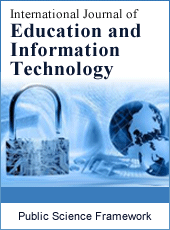International Journal of Education and Information Technology
Articles Information
International Journal of Education and Information Technology, Vol.3, No.4, Dec. 2018, Pub. Date: Oct. 9, 2018
Analysis on Employment Situation of Japanese Elderly Women and Its Enlightenment to China
Pages: 112-118 Views: 2099 Downloads: 492
[01]
Wang Jiadong, Department of Foreign Language, Shandong Jiaotong University, Jinan, China.
The problem of aging population has always been an important issue concerned by all countries in the world. In the process of aging population, the life expectancy of female population is generally higher than that of male population. The longevity gap between men and women is increasing, and the number of elderly female population is in a period of rapid growth. According to the US Census Bureau, the number of elderly women aged 60 and above in the world will reach 650 million in 2025. The proportion of the elderly female population in the developed countries will increase from 10% in 1996 to 14.3%. In 75 developing countries, the elderly female population will also increase by 1.5 times. It is predicted that in 2050, the elderly women aged 80 and above will account for 21.7% of all the elderly female population. The feminization of the aging population brings about a series of new problems in the economic, health and medical care, marriage and family of the elderly women. At the same time, the significance of elderly women's participation in society and how to participate in social issues have attracted the attention of the international community. Japan, one of the most aging countries in the world, has long been widely supported by the view that face the shortage of labor caused by aging actively and the elderly population is essential. In this paper, on the basis of the existing research results, the author take the elderly women as the research object and take the elderly men as the reference,make a comparative analysis between China and Japan on the structure of working age population, employment rate, industry distribution and employment form, study on the employment status and changes of the elderly women in the two countries. The author also explores the background of promoting the employment of older women in Japan, from the perspective of government policies, life expectancy, health and employment intention.
Aging Population, Elderly Women, Employment Status, Japan, Laboring-Age Population, Enlightenment
[01]
Wang Lili (2011), An International Comparative Study on Japan’s Aging Population, Japanese Research.
[02]
Wang Xiaolu, Fu Su (2012), Study on Japan’s Super Aging Society and Its Impacts, Contemporary Economy of Japan.
[03]
Jin Shi (2013), A Study of China’s Aging Trend and Pension Reform with Japan’s Experience and Inspiration, Journal of Zhejiang Wanli University.
[04]
Cui Yingchun (2014), Senior Citizen’s Employment Policies under Background of Population Aging in Japan, Journal of Anhui Normal University.
[05]
Cui Yingchun (2015), The Re-employment of Japanese Women in a Super Aging Society, Collection of Women’s Studies.
[06]
Wang Yuncui (2015), Theeffect of endowment insurance system in Japan's aging strategy, Economic Research Guide.
[07]
WangYanjun, Zhang Jiarui (2015), The Experiences of Japan and South Korea on Countermeasures against Population Aging and Its References, Population Journal.
[08]
Cui Yingchun, Zhang yanxia (2016), The Comparison of the Employment Situation Between Japanese and Chinese Elderly Women, Journal of Huazhong University of Science and Technology.
[09]
Cao Jia (2017), The Enlightenment of Japan's population aging strategy to the aging trend of China's population, Industrial & Science Tribune.
[10]
Zhao Fujun, Lv Zijian, Dong Dandan (2018), Japan's experience and reference to the aging of the population, Political Suggestions.

ISSN Print: 2381-7410
ISSN Online: 2381-7429
Current Issue:
Vol. 5, Issue 1, March Submit a Manuscript Join Editorial Board Join Reviewer Team
ISSN Online: 2381-7429
Current Issue:
Vol. 5, Issue 1, March Submit a Manuscript Join Editorial Board Join Reviewer Team
| About This Journal |
| All Issues |
| Open Access |
| Indexing |
| Payment Information |
| Author Guidelines |
| Review Process |
| Publication Ethics |
| Editorial Board |
| Peer Reviewers |


